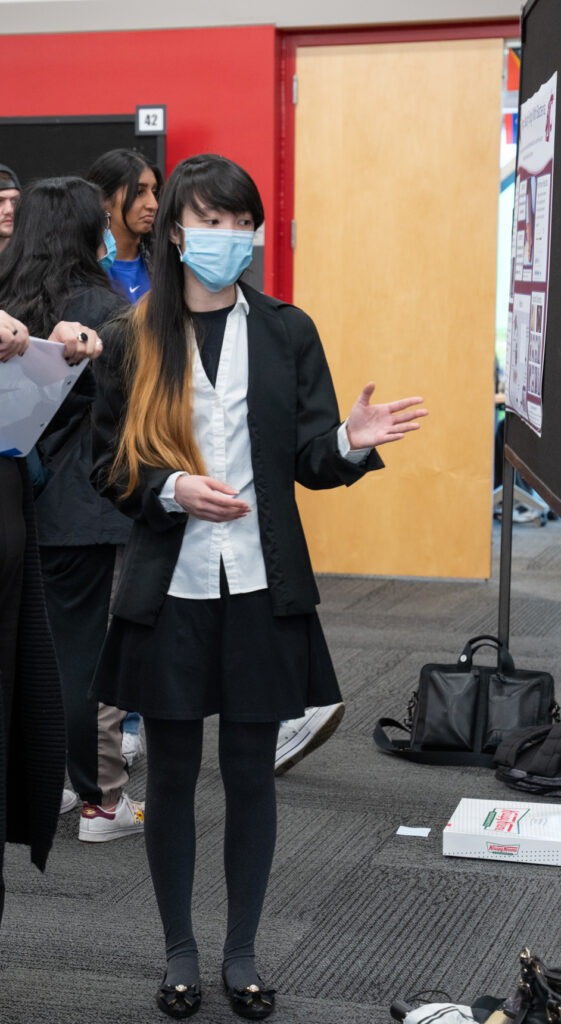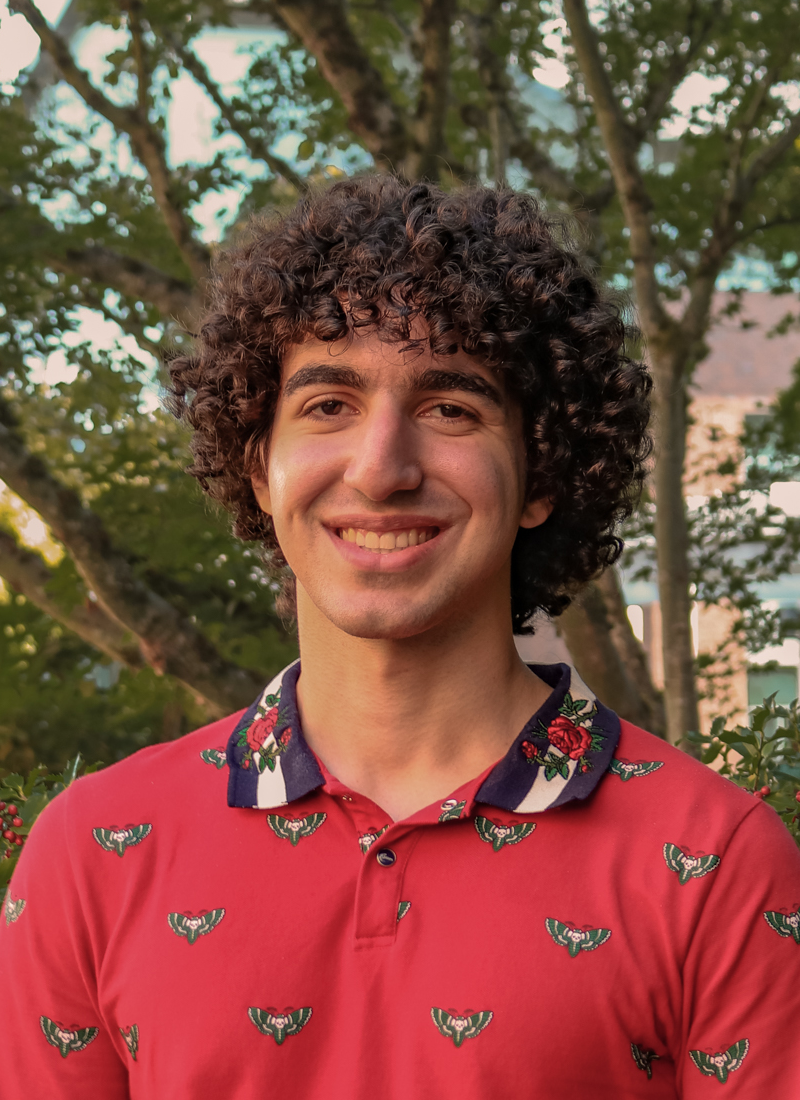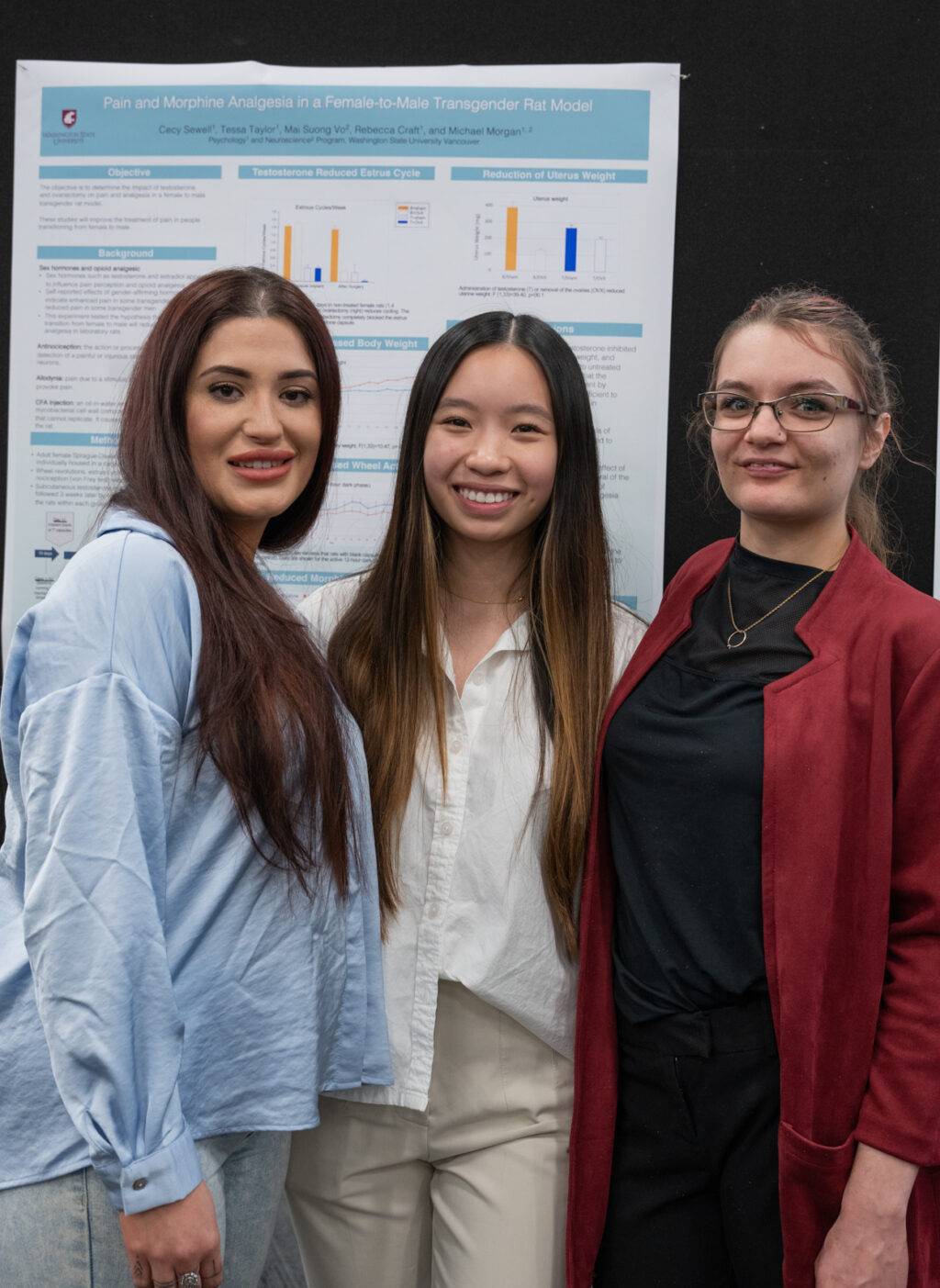This story was originally published in Vol. 33, Issue 9 (May 2023)
WSU Vancouver held its 21st annual research showcase event on April 12, featuring a wide variety of research projects from students from many academic disciplines. The event drew a large crowd of students, faculty, and community members, eager to see the latest innovations and breakthroughs in student research.
Oanh Duong, an undergrad studying biology presented her showcase focusing on microbial fermentation and adopting different teaching methods to determine what students were most responsive to.
“What we wanted to try to do is incorporate an interdisciplinary approach to teaching by having students select the fermented food of their choice and then studying it under four different disciplines,” said Duong. “We had them study it under history, economics, microbiology and [digital technology and culture].”
She determined that students responded very positively to both the interdisciplinary approach and graphic design element of the teaching styles presented, and that they expressed future interest in learning this way.
As for the research process itself, Duong was working on a project that had begun before she was assigned to it. Thus, part of the submission process included synthesizing information from former researchers as well as her own into one large, conclusive paper to be submitted. Time was of the essence for her, as she did not get her complete information until April 6, a mere six days before the research showcase.
While Duong’s focus is not in fermented foods or teaching research, the showcase was an opportunity for her to “get started thinking about research and just the way that we can express ideas in an academic setting.”
Jeremiah Westrum, a graduate student studying mechanical engineering had his showcase focus on the mechanisms of the carbon fabric cutting process, which included making multiple designs for blades and experimenting with different factors to determine the best method for cutting carbon fabric with a Computer Numerical Control machine. He had his own burdens when it came to submitting the abstract, much like Duong.
“I had to push my limits in order to make things work,” said Westrum. “When you hit those challenges, you anticipate that you’re going to have some time where you need to edit stuff and then you go from there. This had to be redesigned a couple of times to make it look decent, took about three weeks.”
He emphasized that the workshops helped him significantly when it came to designing his poster, stating that it was what led him to redesign it initially.
“I would encourage more people to go and look at the workshop,” said Westrum. “So at least you’re not going from nothing, you’re going from somebody who’s an expert.”

Cecy Sewell and Mai Vo are undergraduate students, and their project was about female to male transgender rats and their response to pain.
Working with Dr. Michael Morgan at WSU Vancouver and building on the work of Dr. Rebecca Craft at WSU Pullman, they discovered that the estrus cycle (a recurring period of fertility in most mammals except primates) would decrease or even disappear entirely when receiving testosterone. They also observed changes in their organs, particularly in the weight of the uterus. They discovered that testosterone significantly impacted the rats’ “pain differences and pain responses to morphine. So you could say opiates, but in our case, morphine,” Sewell emphasized.
While Vo will not be further pursuing the subject as much as her co-presenter Sewell, she emphasized that she plans on utilizing the knowledge gained from the experience into her future career.
“I know Cecy, our lead presenter here, she is going to go more into depth of the male to female rat transition, because this poster was on female to male so she wants to [study] the opposite, but for me, I am headed to the medical field,” said Vo.
The first place winners of the undergraduate research showcase were Levi Benning and Amethyst Skye, with their project that aimed to utilize drones and machine learning to detect pavement distress. Benning explained that the computer science department was interested in exploring the usage of drones or uncrewed aircraft systems and their usage along with machine learning to identify and detect cracks or pavement distress in pavement.

Benning and Skye worked in parallel to develop different parts of the system including developing the system requirements for the aircraft, putting forward all of the hardware that they would need to purchase the aircraft, looking at models they could use to train a machine, as well as looking at datasets that they can use to train a machine learning model.
One of the biggest challenges Skye encountered was the lack of diverse data sets for training the machine learning model.
“There were some datasets that were available online for us to use and we utilized those but what we found was that the data was not diverse enough for our use case. And so that resulted in our model not performing well for certain cracks, like pavement distress types,” Skye stated.
She also noted that deploying machine learning models onto actual hardware was difficult as there wasn’t much information on how to make them work on tiny computers, especially ones that are embedded in the usage of aircraft systems such as unmanned drones. Another issue was that different models required different software, and they had to find ways to keep these models separate but still work at the same time. In other words, multiple models needed to exist on the same hardware despite different models having different software needs.
Benning added that the software dependencies for these different models was not something they initially thought of, and they ran into some difficulty with getting the different models to run concurrently. A lot of their time was invested in trying to reproduce results from others’ past research and then translating that into their actual system, which was designed to be used on their aircraft. Benning is planning on going into the drone industry for his next job, and the experience he gained from the project in overall system architecture and design will be valuable in his future career.
Despite the challenges, Skye expressed that the project gave her a lot of insight into what deep learning and object detection looks like, on all levels.
“I definitely think that this experience gave me tons of insight and knowledge that I can take to industry in the future, whatever the use case may be for.”
For more information on the research showcase, visit www.vancouver.wsu.edu/research-showcase

Shawyan is a junior studying computer science at WSU Vancouver.
